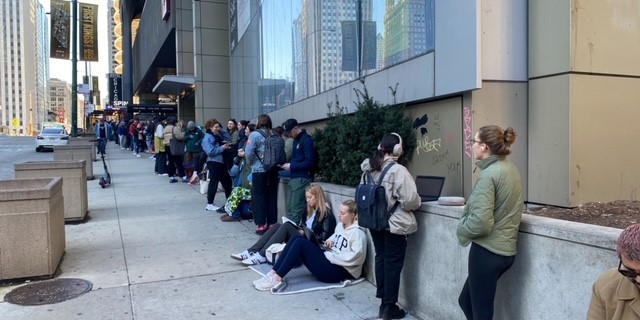Seventy-five counties in Illinois are now at a "warning level" for coronavirus, the state's health department said Friday.
The warning means each of the counties saw increases in two or more COVID-19 "risk indicators," the health department said.
The counties now under a warning include: Adams, Alexander, Bond, Boone, Bureau, Calhoun, Carroll, Chicago, Christian, Clay, Clinton, Coles, Cook, Crawford, Cumberland, DeKalb, Douglas, DuPage, Effingham, Franklin, Fulton, Gallatin, Greene, Grundy, Hamilton, Hancock, Iroquois, Jackson, Jasper, Jersey, Jo Daviess, Johnson, Kane, Kankakee, Kendall, Knox, Lake, LaSalle, Lee, Livingston, Logan, Macon, Madison, Marion, Mason, Massac, McHenry, Mercer, Monroe, Morgan, Moultrie, Ogle, Peoria, Perry, Pike, Pulaski, Putnam, Randolph, Rock Island, Saline, Sangamon, Scott, Shelby, St. Clair, Stephenson, Tazewell, Vermilion, Wabash, Warren, Washington, Wayne, Whiteside, Will, Williamson, Winnebago, and Woodford.
Last week, 49 counties were at a "warning level." The week before that it was 51.
"Although the reasons for counties reaching a warning level varies, some of the common factors for an increase in cases and outbreaks are associated with university and college parties as well as college sports teams, large gatherings and events, bars and clubs, weddings and funerals, family gatherings, long-term care facilities, correctional centers, schools, and cases among the community at large, especially people in their 20s," the Illinois Department of Public Health said in a statement.
IDPH said officials observed businesses "blatantly disregarding mitigation measures, people not social distancing, gathering in large groups and not using face coverings."
"Mayors, local law enforcement, state’s attorneys and other community leaders can be influential in ensuring citizens and businesses follow best practices," IDPH added.
Local
Among the metrics evaluated to determine if a county has reached a "warning level" are:
• New cases per 100,000 people. If there are 50 or more new cases per 100,000 people in the county, this triggers a warning.
• Number of deaths. This metric indicates a warning when the number of deaths increases more than 20% for two consecutive weeks.
• Weekly test positivity. This metric indicates a warning when the 7-day test positivity rate rises above 8%.
• ICU availability. If there are fewer than 20% of intensive care units available in the region, this triggers a warning.
• Weekly emergency department visits. This metric indicates a warning when the weekly percent of COVID-19-like-illness emergency department visits increase by more than 20% for two consecutive weeks.
• Weekly hospital admissions. A warning is triggered when the weekly number of hospital admissions for COVID-19-like-illness increases by more than 20% for two consecutive weeks.
• Tests perform. This metric is used to provide context and indicate if more testing is needed in the county.
• Clusters. This metric looks at the percent of COVID-19 cases associated with clusters or outbreaks and is used to understand large increase in cases.
Illinois reported more than 10,000 new coronavirus cases on Friday, setting a new one-day record for the second day in a row as the state's positivity rate continues to climb.
The state reported 10,376 new coronavirus cases and 49 additional deaths in the previous 24 hours, according to the latest data released Friday by the Illinois Department of Public Health.
The latest figures bring Illinois' total to 465,540 cases and 10,079 deaths across the state since the pandemic began. The total number of cases increased by more than 18,000 (well above the 10,000 confirmed cases reported Friday) from the figures released the day before due to a change in the way probable cases are being reported moving forward, officials said.



